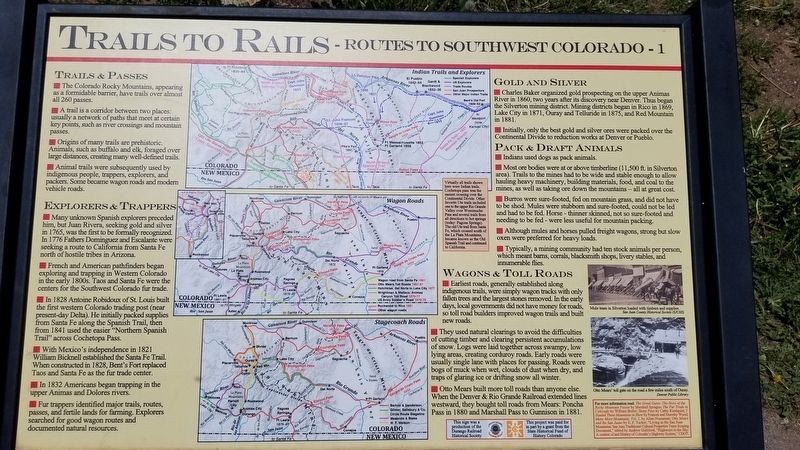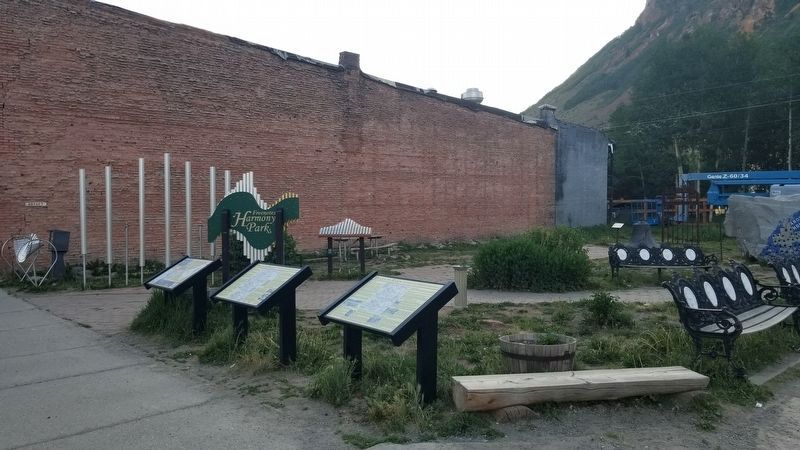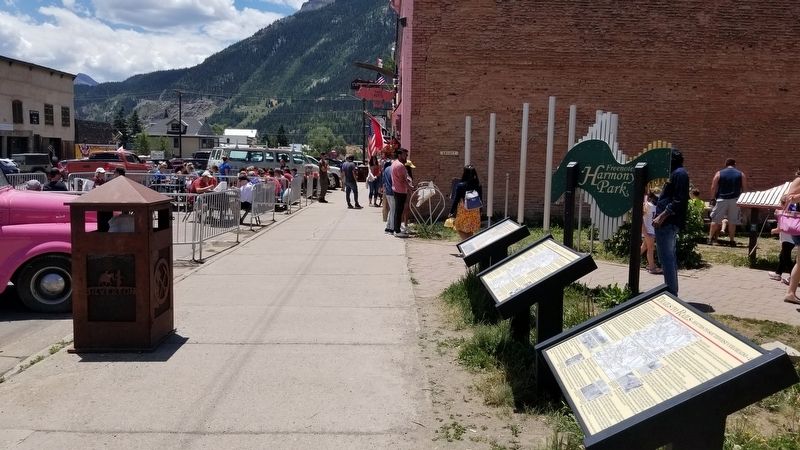Silverton in San Juan County, Colorado — The American Mountains (Southwest)
Trails to Rails
Routes to Southwest Colorado - 1
Trails & Passes
▪︎ The Colorado Rocky Mountains, appearing as a formidable barrier, have trails over almost all 260 passes.
▪︎ A trail is a corridor between two places: usually a network of paths that meet at certain key points, such as river crossings and mountain passes.
▪︎ Origins of many trails are prehistoric. Animals, such as buffalo and elk, foraged over large distances, creating many well-defined trails.
▪︎ Animal trails were subsequently used by indigenous people, trappers, explorers, and packers. Some became wagon roads and modern vehicle roads.
Explorers & Trappers
▪︎ Many unknown Spanish explorers preceded him, but Juan Rivera, seeking gold and silver in 1765, was the first to be formally recognized. In 1776 Fathers Dominguez and Escalante were seeking a route to California from Santa Fe north of hostile tribes in Arizona.
▪︎ French and American pathfinders began exploring and trapping in Western Colorado in the early 1800s. Taos and Santa Fe were the centers for the Southwest Colorado fur trade.
▪︎ In 1828 Antoine Robidoux of St. Louis built the first western Colorado trading post (near present-day Delta). He initially packed supplies from Santa Fe along the Spanish Trail, then from 1841 used the easier "Northern Spanish Trail" across Cochetopa Pass.
▪︎ With Mexico's independence in 1821 William Bicknell established the Santa Fe Trail. When constructed in 1828, Bent's Fort replaced Taos and Santa Fe as the fur trade center.
▪︎ In 1832 Americans began trapping in the upper Animas and Dolores rivers.
▪︎ Fur trappers identified major trails, routes, passes, and fertile lands for farming. Explorers searched for good wagon routes and documented natural resources.
Gold and Silver
▪︎ Charles Baker organized gold prospecting on the upper Animas River in 1860, two years after its discovery near Denver. Thus began the Silverton mining district. Mining districts began in Rico in 1869, Lake City in 1871, Ouray and Telluride in 1875, and Red Mountain in 1881.
▪︎ Initially, only the best gold and silver ores were packed over the Continental Divide to reduction works at Denver or Pueblo.
Pack & Draft Animals
▪︎ Indians used dogs as pack animals.
▪︎ Most ore bodies were at or above timberline (11,500 ft. in Silverton area). Trails to the mines had to be wide and stable enough to allow hauling heavy machinery, building materials, food, and coal to the mines, as well as taking
ore down the mountains - all at great cost.
▪︎ Burros were sure-footed, fed on mountain grass, and did not have to be shod. Mules were stubborn and sure-footed, could not be led and had to be fed. Horse - thinner skinned, not so sure-footed and needing to be fed - were less useful for mountain packing.
▪︎ Although mules and horses pulled freight wagons, strong but slow oxen were preferred for heavy loads.
▪︎ Typically, a mining community had ten stock animals per person, which meant barns, corrals, blacksmith shops, livery stables, and innumerable flies.
Wagons & Toll Roads
▪︎ Earliest roads, generally established along indigenous trails, were simply wagon tracks with only fallen trees and the largest stones removed. In the early days, local governments did not have money for roads, so toll road builders improved wagon trails and built new roads.
▪︎ They used natural clearings to avoid the difficulties of cutting timber and clearing persistent accumulations of snow. Logs were laid together across swampy, low lying areas, creating corduroy roads. Early roads were usually single lane with places for passing. Roads were bogs of muck when wet, clouds of dust when dry, and traps of glaring ice or drifting snow all winter.
▪︎ Otto Mears built more toll roads than anyone else. When the Denver & Rio Grande Railroad extended lines westward, they bought toll roads from Mears: Poncha Pass in 1880 and Marshall Pass to Gunnison in 1881.
Captions
Maps: Virtually all trails shown here were Indian trails. Cochetopa pass was the easiest crossing over the Continental Divide. Other favorite Ute trails included one to the upper Rio Grande Valley over Wemminuche Pass and several trails from all directions to hot springs (today: Pagosa Springs). The old Ute trail from Santa Fe, which crossed south of the La Plata Mountains, became known as the Old Spanish Trail and continued to California.
Lower right, top: Mule team in Silverton loaded with timbers and supplies. San Juan County Historical Society (SJCHS)
Lower right, bottom: Otto Mears' toll gate on the road a few miles south of Ouray. Denver Public Library
For more information read: The Great Gates: The Story of the Rocky Mountain Passes by Marshall Sprague; The Fur Trade in Colorado by William Butler, Stony Pass by Cathy Kindquist; I Hauled These Mountains in Here by Frances and Dorothy Wood; Many More Mountains, Vol. 1, by Allen Nossaman; Orto Mears and the San Juans by E.F. Tucker, "Living in the San Juan Mountains: San Juan Traditional Cultural Properties Team Scoping Document," edited by Andrew Gulliford; "Highways in the Sky: A context of and History of Colorado's Highway System," CDOT.
Erected by Durango Railroad Historical Society.
Topics. This historical marker is listed in this topic list: Railroads & Streetcars. A significant historical year for this entry is 1765.
Location. 37° 48.696′ N, 107° 39.879′ W. Marker is in Silverton, Colorado, in San Juan County. Marker is at the intersection of Greene Street (County Highway 110) and West 12th Street, on the left when traveling north on Greene Street. The marker is located in front of the Silverton City Park. Touch for map. Marker is at or near this postal address: 1157 Greene Street, Silverton CO 81433, United States of America. Touch for directions.
Other nearby markers. At least 8 other markers are within walking distance of this marker. A different marker also named Trails to Rails (here, next to this marker); Silverton's Railroads (here, next to this marker); 1157 Greene (a few steps from this marker); Liberty Bell? (a few steps from this marker); 1200 Greene (within shouting distance of this marker); 1219 Greene (within shouting distance of this marker); Silverton Standard (within shouting distance of this marker); Historic Site in Journalism (within shouting distance of this marker). Touch for a list and map of all markers in Silverton.
More about this marker. There is a duplicate of this marker at the Durango Train Station in Durango Colorado
Credits. This page was last revised on August 1, 2021. It was originally submitted on August 1, 2021, by James Hulse of Medina, Texas. This page has been viewed 124 times since then and 13 times this year. Photos: 1, 2, 3. submitted on August 1, 2021, by James Hulse of Medina, Texas.


